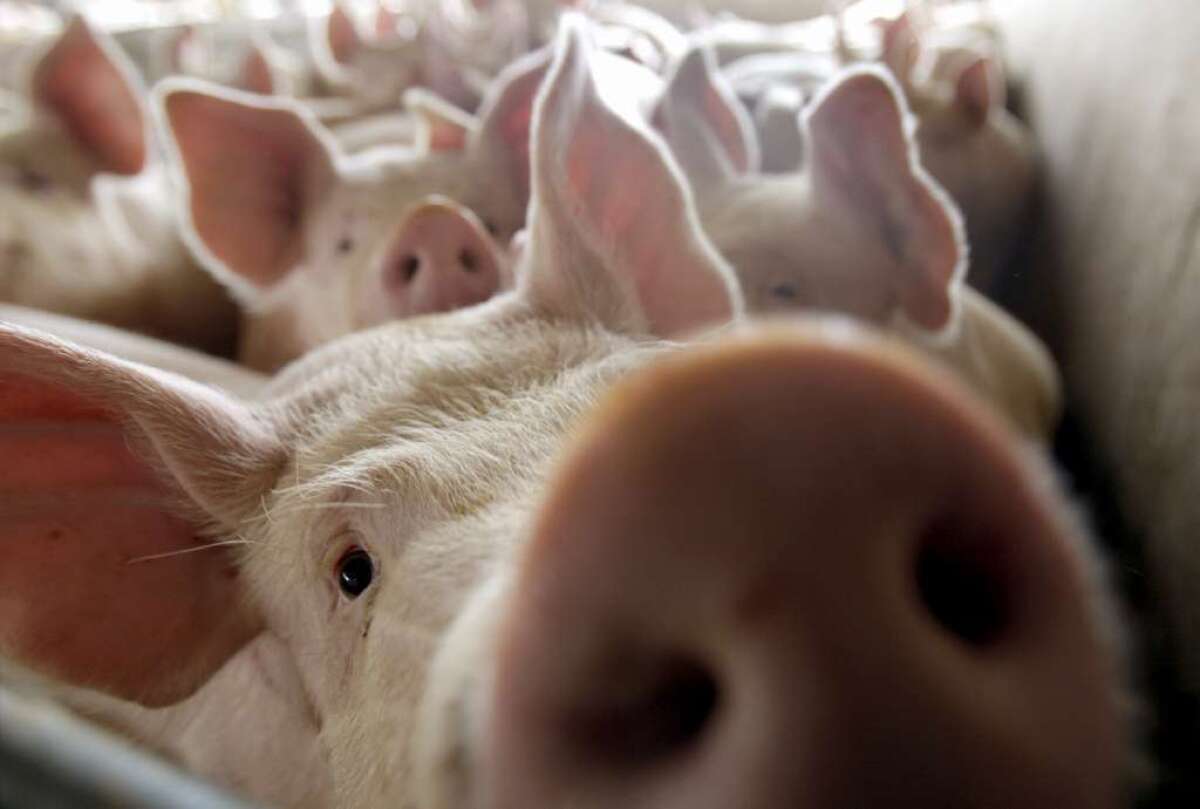MRSA linked to pig manure but is on decline overall, studies say

Estimated cases of infection with methicillin-resistant Staphylococcus aureus, or MRSA, fell more than 30% in the U.S. between 2005 and 2011, suggesting that heightened efforts to combat the infections in hospitals had made a difference, researchers wrote Monday in the online edition of JAMA Internal Medicine.
But another report, also published online in the journal, found that people who lived closest to farms had higher rates of MRSA infection than people who lived farthest from farms — reflecting ongoing concerns about antibiotic use in agriculture and its effects on human health.
The good news/bad news studies were published on the same day that the U.S. Centers for Disease Control and Prevention released a report on antibiotic resistance. MRSA was identified as a microbe of “serious threat” in that publication.
Los Angeles Times coverage: CDC report on antibiotic resistance threat
The JAMA Internal Medicine report on MRSA incidence (subscription required for full report) was also coordinated by the CDC. Examining data collected in communities in nine states, representing more than 15 million people, the team compared cases and types of MRSA infections reported in 2005 and in 2011. Cases acquired in medical settings declined more steeply than those acquired elsewhere.
The study on MRSA incidence and farms (subscription required) was written by scientists at the Johns Hopkins Bloomberg School of Public Health in Baltimore. The team examined MRSA infections in a total of 446,480 patients served by a healthcare system in Pennsylvania between 2005 and 2010.
Using electronic health records and mapping systems (including Google Earth) to figure out how close patients resided to livestock and crop operations, the researchers found that people who lived closer to farms that used swine manure to fertilize crops or that raised livestock were more likely to have MRSA infections than people who lived farther away.
In background information included in the study, the team noted that the Food and Drug Administration had reported that 80% of antibiotics in the U.S. were used in farm animals, mainly to promote growth. The researchers also wrote that 75% of those antibiotics ended up in the animals’ manure, which is used to fertilize crops. Heavy antibiotic use is known to promote the development of resistance in bacteria.
Los Angeles Times coverage: antibiotics and agriculture
In a commentary (subscription required) accompanying the two reports, Columbia University infectious disease researcher Dr. Franklin Lowy wrote that both studies raised important questions. While the estimated number of MRSA cases is down nationwide, the very small decline in cases acquired outside of healthcare settings “highlights the need for a greater understanding of how these epidemic MRSA strains spread and initiate infection within the community,” he said, adding that the study of MRSA incidence near farms indicated that scientists also had a lot to learn about the relationship between antibiotics and microbes found in manure and those that infect people.
“This investigation provides yet another reason to be concerned regarding the use of antibiotics as growth enhancers in animal feed and argues for legislation that restricts the use of antibiotics in this setting,” Lowy concluded.







